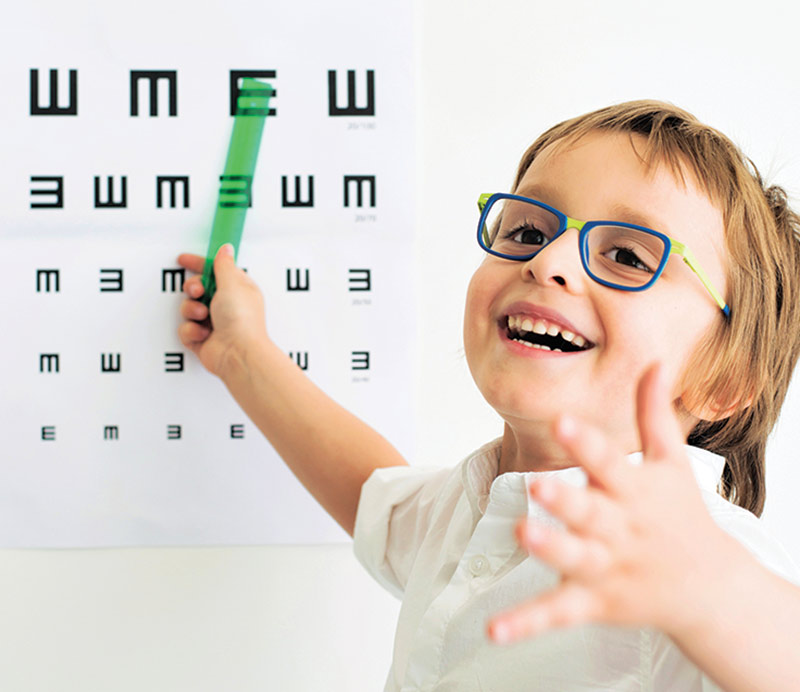
By Linda Conlin, ABOC, NCLEC
Eyecare practitioners have known for years that the incidence of myopia is increasing at an alarming rate. The current epidemic (yes, that’s the term being used) of myopia is projected to affect 50 percent of the world population by 2050, becoming the leading cause of irreversible blindness. It may seem simple to correct blurred vision, the predominant symptom of myopia, with contact lenses or glasses, but corrected myopia, particularly high myopia, carries the risk of secondary blinding complications such as glaucoma, myopic maculopathy and retinal detachment, making prevention urgent.
WHAT CAUSES MYOPIA?
Myopia, or nearsightedness, results from a mismatch between the axial length of the eye (too long) and the power of its refractive components resulting in images that focus in front of the retina, causing blurred vision at distance. The causes of axial myopia are multifactorial, as are the treatments which range from ophthalmic lenses to specialty contact lenses that reduce accommodative demand and correct peripheral defocus, among others.
Among the causes of myopia under investigation are genetics and environmental factors including near work and time spent outdoors. While genetic predisposition has not significantly changed over the past few decades, environmental factors as a result of changes in behaviors have. Considering the recent rapid increase in myopia, environment has sparked great interest in myopia research and product development. Both natural and artificial light are being investigated for their roles in myopic development.
SUNLIGHT
Increased time outdoors for children is associated with reduced odds of myopia, even when they perform a great deal of near work. In addition, Donovan et al. have found myopia progression to be slower during the summer than winter, possibly because of increased outdoor exposure. According to Lingham et al., the potential protective effect of outdoor light against myopia is most likely due to one or both of the following factors which are suboptimal in indoor lighting: 1. Increased light intensity, and 2. Favorable spectral composition of light. Other research suggests factors such as variations in accommodation due to light intensity and pattern, but also to reduced peripheral retinal defocus and increased visual spatial frequency (the distribution of light and dark in an image), increased pupil constriction and changes in the characteristics of light exposure.
Studies have shown that the optimum sunlight exposure for children to mitigate the development of myopia is two hours per day, or 14 hours per week. It’s important to keep in mind, however, that children are more susceptible to the deleterious effects of UV exposure from sunlight than adults. Damage from UV exposure is cumulative, and children receive upwards of 50 percent of their lifetime UV exposure before the age of 18. The cost/benefit of outdoor time must be balanced by UV protective sunwear when children will be spending extended time outdoors.
ARTIFICIAL LIGHT
The protective effect of time spent outdoors is lacking in artificial lighting indoors. The intensity of sunlight varies depending on weather, atmospheric conditions, elevation and time of day, but consider bright sunlight to be approximately 98,000 lux. By contrast, common indoor light levels are in the range of 100 to 300 lux for normal activities. According to Hua et al., increasing the ambient light levels to 558 lux at the desk and 440 lux at the blackboard in classrooms can reduce the percentage of new myopia onset.
What about blue light? According to the NIH, because of blue light’s short wavelength, between 415 and 455 nm, the focus is not located in the center of the retina but rather in the front of the retina, so that long exposure time to blue light causes a worsening of visual fatigue and nearsightedness. A survey of the impact of screen reading on schoolchildren’s visual acuity was recently conducted. The results show that screen reading can lead to the occurrence and development of poor eyesight in schoolchildren, and the higher incidence of nearsightedness correlates with the increase in the length of screen reading time. However, like exposure to the UV in sunlight, balanced exposure to blue light can be beneficial. A certain degree of blue light can slow the growth of the eye axis, prevent the occurrence and development of myopia, and also regulate circadian rhythms. The CDC recommends screen times of one hour per day for 2 to 5 years old; 6 to 7 years old: two hours plus homework; 8 to 10 years old: six hours; 11 to 14 years old: nine hours; and 15 to 18 years old: seven and a half hours (homework time is included for school age groups).
CONCLUSION
During the Covid-19 pandemic, toddlers, children and teenagers alike were exposed to unprecedented amounts of indoor time, sparking concerns over an ever more severe myopia boom. Besides these unusual circumstances, there is a need for consensus on optimal, feasible and noninvasive light interventions for myopia prevention in children, whether through increased time outdoors or adapted indoor lighting.













